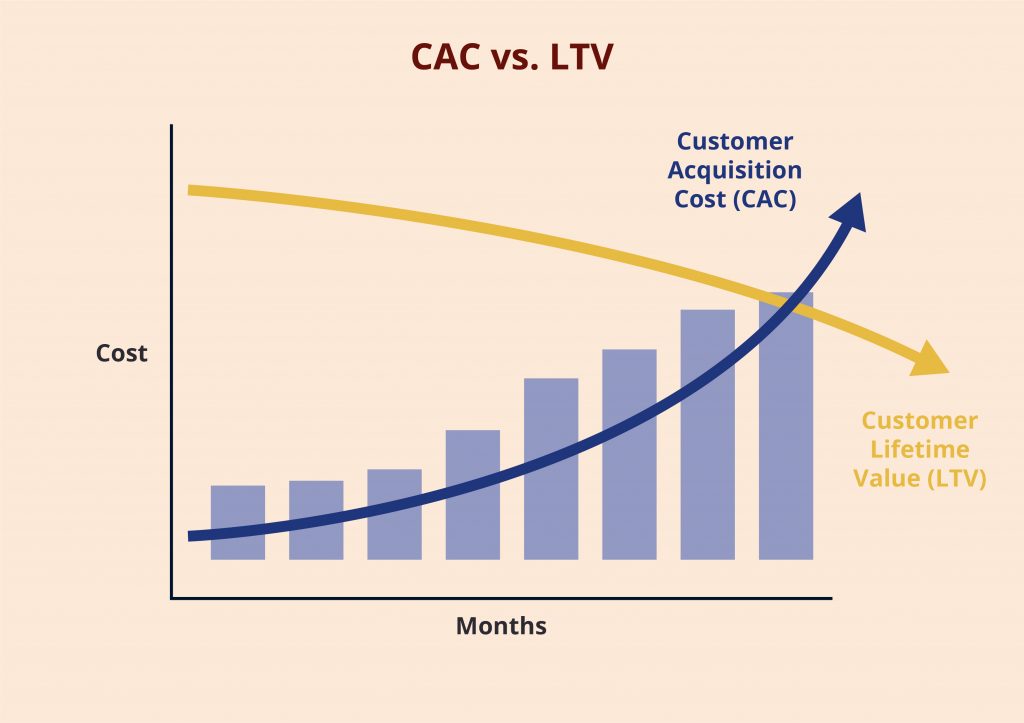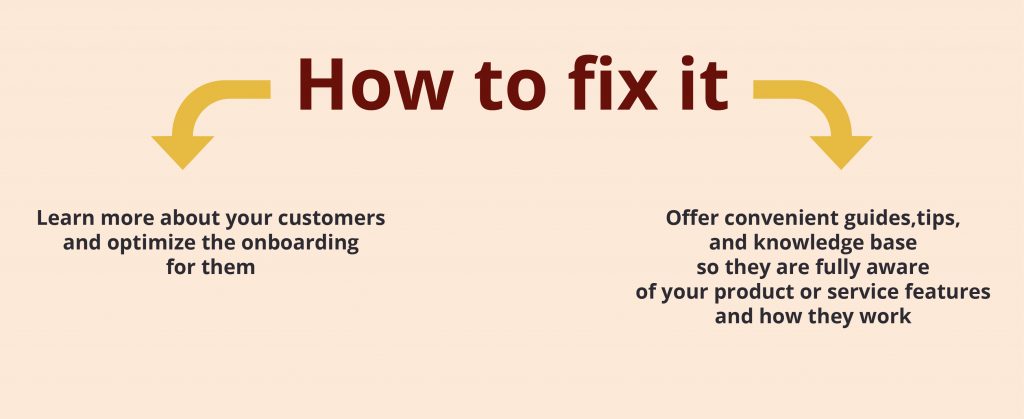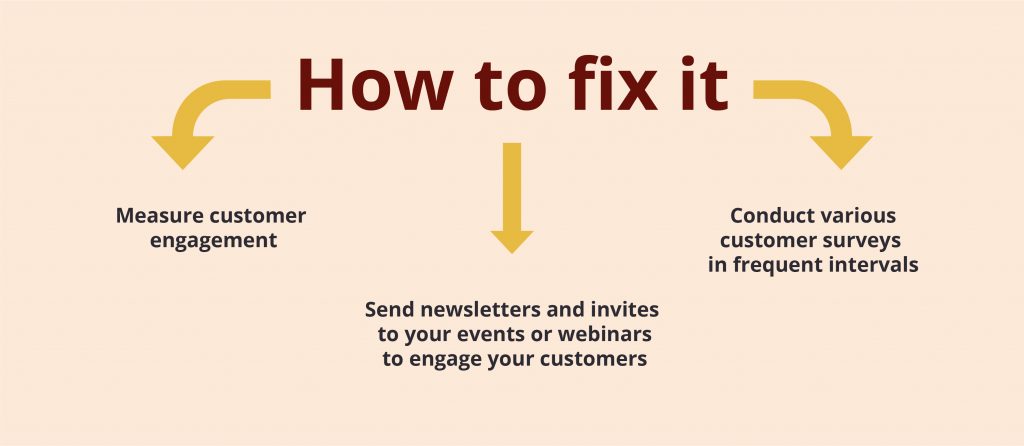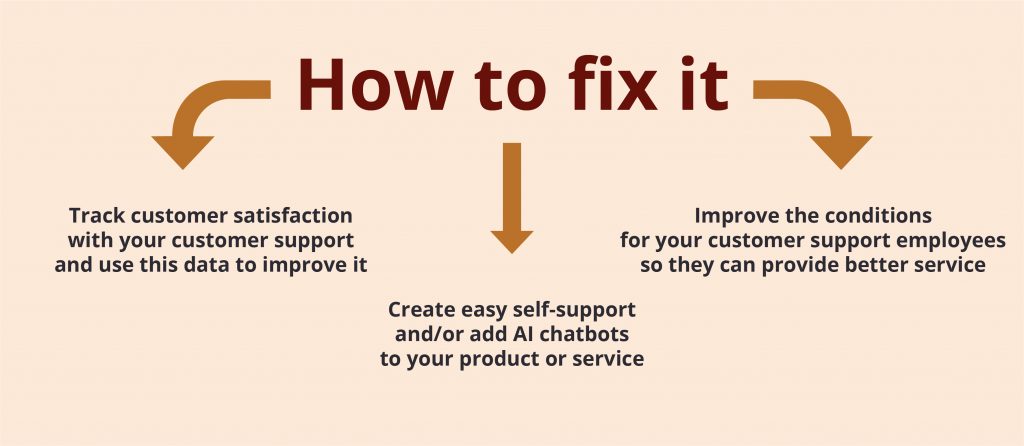Customer Churn Rate and Its Impact on Business Performance

A startup can be viewed as a business experiment that has potential, but that same potential can make startups prone to failure. The more innovative a startup is, the riskier its position in the market. Risks associated with traditional businesses are applicable to a startup, too. On top of this, 4 of 10 startups are in the ‘red zone’ now due to the COVID-19 pandemic.
Earlier in the article on metrics that matter for product success, we briefly discussed customer retention rate and its opposite, customer churn rate. These are important for understanding any business’s health and prospects. For subscription-based software-as-a-service (SaaS) startups, tracking these metrics can be a matter of survival.
This article explains the correlations between the customer attrition rate and other important indicators, how to calculate it, and what steps can help reduce customer churn.
What Customer Churn Rate Tells about a Business
Customer churn is also called defection, attrition, or turnover and is the opposite of a business’s ability to retain customers. Churn occurs when customers stop using a product or service, e.g., cancel their subscription or close their account.
A high customer churn rate eventually undermines the business’s ability to make a profit and affects its return on investment. To prevent such a scenario, a business should gain more customers than it loses in a specific period.

The moment of churn is defined in two ways: when the subscription ends and the customer doesn’t renew it, or at the moment of the cancellation. The latter scenario is more favorable since customers usually cancel shortly before the time their subscription ends. Therefore, as long as they are still using the product or a service, there is time and opportunity to reach and win them back.
The annual rate is typically viewed as a goal and the monthly rate as a benchmark or contribution to an annual goal. Although both use the same formula, they represent different data.
Seasonal churn fluctuations may occur, especially if a business depends on the season. To understand seasonal churn rates, the managers need to collect them throughout several cycles.
The churn rate shows how a business’s growth is slowed down. Imagine a bucket that has a hole that you are not aware of. When you’re trying to fill a bucket with water, it will never be full because the bucket continues to leak. To keep your business afloat, you have to work harder and harder. If you want your business to grow, you’ll need to detect the leak, measure it, and repair it.
Knowing your customer churn rate helps understand a number of factors about a business’s performance and sales:
1. Insights on why customers might leave are important since they can explain why revenue is decreasing. Churn rates can reveal patterns in when customers leave and the reasons behind it. Comparing the number of churned and acquired customers may show the business’ overall performance.
2. Knowing the churn rate will help to understand customer satisfaction and test solutions for improving it. Usually, this is done through improving the product and customer journey and analyzing the impact of the changes.
3. Customer churn shows whether customer retention is improved on a period-to-period basis.
Customer Churn Rate and Other Key SaaS Metrics
Customer churn rate affects several financial metrics of a business:
1. Monthly recurring revenue (MRR). Customer churn directly affects revenue churn: if a SaaS business loses an existing customer, it also loses future revenues. Revenue reflects a business’s long-term viability, so it is important to control it.
2. Net negative MRR churn. This indicator means that revenue generated by a business from month to month exceeds the revenue that is lost due to customer attrition. When the customer churn rate is low, it is easier to achieve net negative MRR churn.
3. Customer lifetime value (CLV) or lifetime value (LTV). CLV is the total dollar amount a business gets from a single customer over the lifetime of their account. It is a marker of business profitability and longevity. The most valuable customers are the ones that stay long or indefinitely. Customer churn lowers the CLV: when a customer leaves, the revenue that could have been earned decreases.

4. Customer acquisition cost (CAC). Every business spends money to attract new customers. It is much cheaper to retain existing customers than to get new ones. If they leave before the business recoups the money spent on getting them, its CAC increases. SaaS businesses need to reduce CAC by all means, and one way to do it is to reduce customer attrition.
The optimal monthly customer churn rate is 2-5%; a 5-7% annual churn is considered acceptable, so it is possible to compare and see how good or bad the situation is. The rule of thumb is: the lower the customer churn, the better.
Calculating and Tracking Customer Churn Rate
Calculating and tracking customer attrition will help you understand your business’ effectiveness at retaining existing customers and reducing churn. Here are some ways for businesses to learn their customer churn rate:
1. Basic churn rate. It is usually expressed as a percentage. The basic churn rate formula includes only two variables: the total number of customers and the number of churned customers:

So, if at the beginning of the year business had 10,000 customers and 500 of them churned during the year, the annual churn rate is going to be 5%.

Established businesses with stable growth can use this simple formula and get correct results. However, new businesses with substantial new customers each month may end up with more customers lost per month, but the rate will be better.

2. Monthly and annual churn rates are calculated using a similar formula:

Churn rates for specific periods are useful for monitoring trends and comparing business success over time. Usually, businesses calculate and track monthly, annual, and quarterly rates, and share the results with all the departments to collect data and identify a possible correlation between the customer churn and their actions, e.g., bug fixing, updates, changes in pricing, etc.
3. Probability or predictive churn rate. It is based on the idea that if a customer keeps using a product or service, the customer hasn’t churned, but they had ten chances to do so. This is called ‘a customer day,’ one day that a user remained active.

So, if at the beginning of August the product or service had 10,000 users and 10,513 at the end, the net new user gain will be 513. There are 31 days in August. Thus, the customer days in August made:

Let the total churn in August be 500. Thus, churn per day can be calculated:

And per month:

This method factors in probabilities and is useful to account for rapid growth that may be twisted by any formula mentioned earlier.
Knowing these numbers will help to control your business and provide you with a clear picture of the business achievements. With customer churn calculations, it is easier to attach value to efforts and assign resources to get rid of the reasons that make customers churn.
Finally, a thoroughly calculated churn rate helps prevent time and money waste.
Three Leading Reasons for Customer Churn
Customers can churn at the beginning or somewhere along the way, but first and foremost, a quick reduction of the customer base signals a business’s inability to retain customers. For subscription-based businesses, depending on recurring revenue, it may prove fatal.
The three primary reasons a customer leaves may be:
1. Poor onboarding. Churn may happen because customers need something else, but often, they may be confused about how to use the product or service due to a lack of proper guidelines or instructions.

2. Weak relationships with the customers. Maintaining healthy relationships with the customer base should be an ongoing process. According to CustomerThermometer, 56% of users churned because of the poor treatment they’ve received. Poor customer treatment happens when a company’s policy is prioritized above customer needs. Thus, companies make decisions beneficial to them, but roadblocks for customers. Another way relationships with customers can be compromised is through feedback, namely ignoring it or keeping customers on hold for too long. Ultimately, customers are not very pleased when their personal privacy gets compromised.

3. Poor customer service. Customer service can make or break a SaaS business: according to Zendesk, 82% of customers churn due to poor customer service. It is important to maintain customer support at the proper level and safeguard customers’ happiness.

The issues that lead to significant churn should be fixed without delay: they may gain a snowball effect and become harder to deal with, if not too late. The goal lies in preventing customer churn from becoming a problem. Creating a healthy customer culture is the first step to make customers feel happy with the product or service.
More Ways of Reducing Customer Churn
Once customer attrition is calculated and analyzed, it is time for devising a long-term churn prevention strategy. The following steps may be beneficial:
1. Create and encourage yearly subscriptions.
A yearly subscription plan usually offers a significant discount, which keeps customers hooked for a longer period. This means higher revenue and gives your product or service time to grow into the perfection that users won’t be able to abandon. According to ProfitWell, businesses without a yearly contract plan have an average annual churn rate of 9% while the ones with 75%-100% annual contracts have this rate down to 3%.
2. Create and maintain a FAQ page.
Customers need support when dealing with a new product or service, so a FAQ page is a good way to help them understand how to use it or deal with any emerging issues. This page might include an easy-to-read manual and a section with answers to frequently asked questions. As the product or service strengthens, the FAQ page should be updated, e.g., to include new questions and answers, so that its content remains relevant.
3. Collect feedback.
Customer dissatisfaction is one of the major factors behind customer attrition. Feedback is an excellent tool to find out its reasons and determine the changes that might solve customers’ problems. Reaching back to customers and thanking them for their feedback will help to get them on your side.

4. Enable customers to request a feature.
Customers may write something that they want in feedback, but they will be more likely to do so when you encourage them specifically. It is possible to find out what they cannot get from your product or service through surveys or emails. As a bonus, this explicit attention to your customers’ opinions and needs may also contribute to reducing customer churn.
As an option, it is also possible to use feature request software that lets customers upvote the features that they need most. Such software shows requests and makes it possible to prioritize them easily.
Remember that everything a business does can affect its customer attrition. Establishing ways to prevent or reduce customer attrition will empower you to concentrate on growing business rather than on ways to save it. Thus, it is crucial to pay attention to churn ups and downs and fix the situation without a delay.
Wrapping Up
Customer churn rate is one of the paramount metrics for tracking business performance over time. No matter how good a product or service is, a zero rate is impossible. However, it’s feasible to set realistic goals, monitor the metric consistently, and control or even lower your customer churn.
Some customers will churn. This is inevitable. Focus your customer churn prevention strategy on keeping your core groups of customers, the most loyal ones: such customers spend more and gladly share their satisfaction on social media, helping you win more customers.
Since customer dissatisfaction is one of the major reasons behind customer attrition, knowing the customers’ thoughts and impressions is key to reducing customer churn. An effective process of gathering and analyzing feedback will be extremely helpful to this end.
Using data garnered from your customers, you can understand their needs and problems better, and thus optimize your product, service, and customer experience. Consistent product improvement should help mitigate, control, and even prevent the loss of users.
If you need help, please don’t hesitate to contact Alternative-spaces. Our experienced UX/UI designers, software engineers, and flexible development process will facilitate the implementation of necessary changes without losing progress, time, and help to keep your project on budget.
Content created by our partner, Onix-systems.
 Home
Home